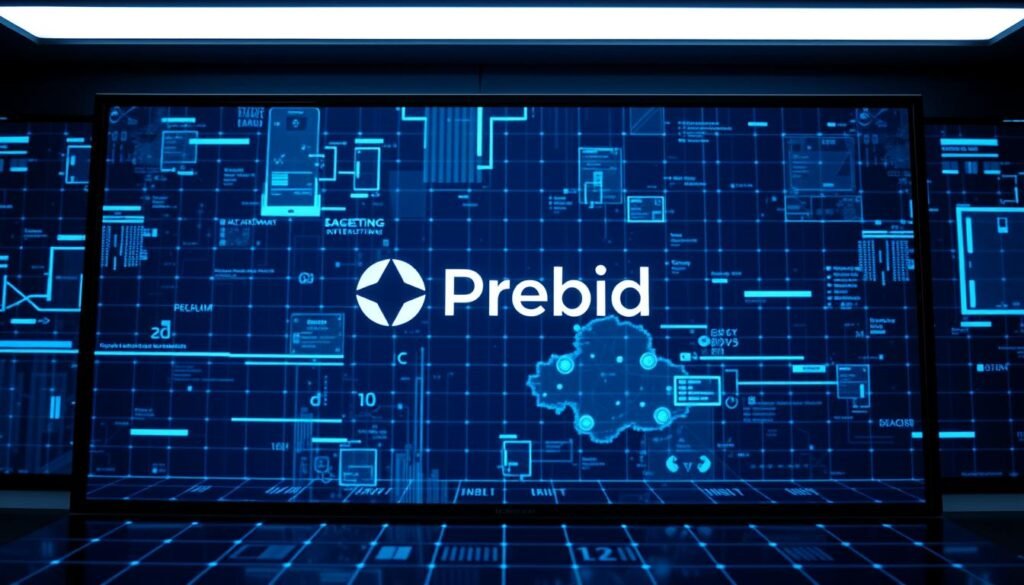A major change happened on April 17, 2025. Judge Claude M. Hilton ruled that Google broke the law. Google had tied its ad server, Google Ad Manager (GAM), to Google Ad Exchange (AdX). This made the market for real-time bidding and display ads very tight.
Now, publishers and buyers have to move away from this tight setup. They will have more choices in the programmatic world.
This ruling is good news for publishers. They can now try out different ad servers and platforms. Companies like AdButler offer solutions that don’t take a cut of the revenue. This could change how ads are sold and how much money publishers make.
There are two main ways to sell ads now: client-side header bidding and server-side Open Bidding. Header bidding lets many demand partners bid at the same time. Google’s Open Bidding works inside GAM. Publishers have to weigh the benefits and drawbacks of each method.
Key Takeaways
- The April 2025 ruling challenges the GAM + AdX coupling and signals a market reset for Programmatic Google AdX.
- Publishers can explore independent programmatic advertising platform and ad server options to regain control and transparency.
- Real-time bidding dynamics will shift as header bidding and Open Bidding compete for publisher adoption.
- Breaking the implicit cost of a “free” ad server tied to AdX could alter take rates and revenue splits.
- Short-term transitions will require publishers to trade off latency, control, and monetization when testing hybrid setups.
What the Recent Antitrust Ruling Means for Programmatic Advertising
A big change happened on April 17, 2025, in the world of programmatic ads. The court said Google’s way of doing things was unfair. It made it hard for other companies to compete.

Summary of the April 17, 2025 federal ruling
The judges said Google’s ad system was unfair. They found out Google preferred its own ads and made it tough for others. This was seen as something that needed to be fixed, but they didn’t say how yet.
How the ruling found Google’s ad tech stack to be a monopoly
The court looked at how Google’s ad system worked. They saw how Google’s control over publishers helped it win auctions. This was seen as unfair and limited competition.
Immediate regulatory and market implications for publishers and buyers
Publishers now have a chance to try new things. They might use different ways to sell ads to get more money. Buyers and agencies need to check who they work with and make sure they can see how ads are bought.
| Stakeholder | Short-term Impact | Likely Near-term Action |
|---|---|---|
| Publishers | New freedom to change stacks; planning complexity | Run pilots with header bidding, adopt Prebid, compare SSPs |
| Buyers / Advertisers | Need clearer reporting on bid paths and fees | Audit tech partners, demand auction-level transparency |
| Independent SSPs / Ad Servers | Chance to regain share and innovate | Promote interoperability and neutral integrations |
| Regulators | Pressure to design remedies such as divestiture or forced interoperability | Consider structural or behavioral options to fix antitrust ad tech problems |
The Google Ad Exchange ruling means big changes for the ad tech world. Companies will have to deal with new rules and possibly changes in how they make money. It will take time for everyone to adjust and find new ways to work.
Programmatic Google AdX: Role, Reach, and Influence
The Google Ad Exchange was key for many publishers. It worked with Google Ad Manager, directing demand to one place. This setup influenced the industry for years.
How Google AdX worked inside the integrated stack
Google Ad Exchange and Google Ad Manager combined ad serving and exchange functions. Publishers often found AdX as the default path. This made it easy for impressions to flow into Google’s system.
Take rates, default adoption of the ad server, and publisher economics
Reports showed AdX take rates near thirty percent. These fees were hidden in the “free” ad server. Publishers lost revenue by using AdX as their default.
Breaking away from AdX could change costs. Publishers might pay for their own ad servers or negotiate better terms. This would impact how they manage revenue and expenses.
AdX’s place in real-time bidding and display advertising
AdX acted as both an exchange and an orchestrator in real-time bidding. It ran auctions and set priorities. This dual role gave it a wide reach in display advertising.
For many, AdX was a main source of display advertising spend. Its strong position affected auctions and the competition for other SSPs and ad servers.
| Role | Effect on Publishers | Implication for Buyers |
|---|---|---|
| Default demand path via integrated ad management platform | Faster setup, limited auction access, potential revenue drag from embedded fees | Consolidated inventory, favored internal demand, reduced visibility into external bids |
| Exchange with orchestration control | Less control over auction mechanics, reliance on Google’s optimization | Higher bid density for favored buyers, competitive disadvantage for some DSPs |
| Primary RTB liquidity source for display advertising | Predictable demand but concentrated counterparty risk | Access to large pools of impressions, potential for preferential treatment |
Open Bidding Explained: Google’s Server-Side Counterpoint to Header Bidding
Open Bidding is Google’s way to run auctions in Google Ad Manager. It uses one ad request to the server. This request triggers auctions where GAM calls AdX and other SSPs, then returns the best bid and creative.

Here are the key differences for publishers to consider between client-side header bidding and server-side Open Bidding.
Mechanics of Open Bidding inside Google Ad Manager
When a page asks for an ad, Google Ad Manager makes a single server call. This call starts server-side auctions with AdX and other SSPs. The highest bid is chosen, and the creative is returned to be shown. Payments and reconciliation are handled by Google.
How server-side Open Bidding differs from client-side header bidding
Header bidding runs in the browser and has parallel auctions. Prebid or similar wrappers are used. Open Bidding, on the other hand, runs server-side auctions in Google Ad Manager. This reduces browser-side code and client roundtrips.
Pros and cons for publishers: latency, control, and revenue trade-offs
Open Bidding reduces client-side latency and makes setup easier. It simplifies payments and reduces technical tasks for teams. The programmatic platform handles bidder calls.
However, it offers less transparency and control over partners. Some publishers see higher eCPMs with header bidding. But, header bidding can slow page loads and needs engineering effort.
| Dimension | Open Bidding (server-side) | Header Bidding (client-side) |
|---|---|---|
| Latency impact | Lower on client, since auctions run server-side in GAM | Higher risk to page load from multiple client bidders |
| Transparency | More opaque auction mechanics inside the programmatic advertising platform | Greater visibility into bids, floors, and bidder behavior |
| Revenue potential | Often lower CPMs versus best-practice header setups | Typically higher eCPMs when configured and managed well |
| Operational overhead | Simplified. GAM handles unified calls and payments | Higher. Requires Prebid configuration, bidder management, and testing |
| Inventory control | Centralized control inside GAM and programmatic google adx ecosystem | Direct partner relationships and granular control over demand sources |
Header Bidding vs Open Bidding: Comparing Auction Dynamics

Publishers have to choose between two main auction types. This section explains the differences between client-side and server-side auctions. It shows why these differences are important for making money and improving website performance.
How header bidding opens inventory to multiple demand partners simultaneously
Header bidding sends bid requests to many demand partners at once. The browser collects these responses. Then, the highest bid is sent to the ad server to compete with other deals.
This method increases competition, which can lead to higher earnings. Publishers using Prebid often see better results when they have a wide range of demand.
How Open Bidding runs unified auctions and the role of GAM
Open Bidding uses a server-side auction inside Google Ad Manager. It makes a single server call to get bids from AdX and third-party partners. Then, Google Ad Manager chooses the winner and serves the ad.
This approach reduces client requests, which can make pages load faster. For some, this is worth the trade-off of less detailed auction information.
Empirical effects on eCPM, page load, and publisher control
Studies show that both methods have their pros and cons. Header bidding can lead to higher earnings but may slow down pages. Open Bidding can make pages load faster but might not offer as much insight into the auction.
To choose, publishers need to weigh revenue, page speed, and the effort needed to manage bidders. Mixing client-side header bidding with server-side Open Bidding can offer a good balance. This is true when done well in the context of programmatic Google AdX and auction dynamics.
Auction Transparency and Why It Matters for Publishers
Publishers need to understand how bids are handled. In programmatic google adx, the lack of visibility made it hard to know why some buyers got inventory and others didn’t. This made it tough to set floors and trust revenue reports.

When an ad management platform does everything, publishers miss out on important details. Without detailed auction data, teams can’t see bid times, priorities, or how winners are chosen. This lack of clarity makes it hard to improve ad earnings quickly.
Potential remedies: auction-level data, Prebid support, and neutral reporting
Regulators might soon require more openness between services. This could mean auction logs and standard reports. Prebid is a good way for publishers to get detailed data from many demand sources.
How transparency can restore publisher yield optimization
With detailed bid data, publishers can run better tests. They can adjust floors, cut bad bidders, and see real CPM gains. AdButler shows how clear reports can lead to more revenue.
| Visibility Need | What It Reveals | Benefit for Publishers |
|---|---|---|
| Auction-level bids | Each bid, timestamp, bidder ID, and price | Accurate floor setting and reliable incremental tests |
| Bid priority rules | Decision logic used by the exchange or ad management platform | Detects internal favoring and improves partner selection |
| Unified reporting | Consistent metrics across header and server paths | Simplifies reconciliation and monetization strategy |
| Prebid compatibility | Per-partner bid detail and wrapper transparency | Enables fair comparisons and faster optimization |
Technical Tradeoffs: Latency, Timeouts, and Bidder Management
Improving page speed and ad revenue needs smart choices. Client-side header bidding makes the browser work harder, which can slow things down. On the other hand, server-side Open Bidding reduces browser work but adds complexity to the ad platform and network.

Impact of client-side vs server-side auctions on page load times
Client-side auctions lead to many connections from the user’s device. This can slow down the page and increase bounce rates if it gets too slow. Publishers using Google AdX saw this problem when too many demand partners were active.
Server-side auctions, however, reduce browser calls. But, they make server processing longer and rely more on backend routing. An efficient ad platform can manage this delay, but server bottlenecks can still affect users.
Best practices for bidder count, timeout optimization, and dynamic floors
Keep the number of bidders low to avoid slowing down the page. Experiments show about ten bidders is a good limit for most pages. Fewer bidders mean lower latency and easier debugging.
Adjust bidder timeout settings to balance response time and user experience. Use data to fine-tune these settings. A longer timeout can increase revenue but also slow down the page.
Use dynamic floors to adjust to demand and seasonality. These floors can prevent low-value calls and adjust pricing without adding extra work to the client-side.
Tools and measurement approaches to diagnose auction latency sources
Use end-to-end tracing to find where latency comes from. Combine real-user monitoring with server logs to track slow pages and bidder responses. Tag each bidder call to find the slowest ones.
Run A/B tests to see how changes in bidder timeout or count affect revenue and page load. Track key metrics like revenue per thousand and user engagement. Use diagnostics and network traces to find hidden causes of latency.
Plan carefully when moving away from integrated stacks. This change may add costs and extra work. Include steps for managing bidders, testing latency, and reconciling changes in your migration plan.
Revenue Implications for Publishers in a Post-Google-Remedy World
The federal remedy separating Google Ad Manager from programmatic google adx would change how publishers make money. With more demand going to different SSPs and ad servers, publishers’ income might change. This could mean they earn less or more than before.

How decoupling GAM and AdX could change take rates and revenue shares
Decoupling means publishers can send their ads to more than one place. This could lead to lower fees and more money for publishers. They might get more money per ad by sending it to the highest bidder.
Costs publishers may incur moving away from a “free” ad server model
Using a different ad server means publishers have to pay for it. These servers charge for each ad shown. This can cut into profits unless the extra money from better ads makes up for it.
Opportunities to optimize yield across multiple SSPs and ad servers
Publishers can make more money by trying different ways to sell ads. They can use tools to compare and choose the best ad sellers. This way, they can earn more without spending too much.
They can test different approaches and keep track of how much they make. This helps them decide if paying for an ad server is worth it. It’s all about finding the best way to make money while keeping costs low.
Buy-Side Implications: DSPs, The Trade Desk, and Emerging Alternatives
The way publishers sell ads is changing, giving more power to buyers. Advertisers and agencies want partners that keep buying and selling separate. They also want clear auction data and access to many types of inventory.

Why neutral DSPs could gain share as interoperability increases
Neutral DSPs align better with buyers because they don’t own publisher inventory. This independence helps avoid conflicts when the ad market changes. Agencies might move their budgets to DSPs that offer clear auction data and work well with third-party reports.
How Unified ID solutions and privacy-first identifiers factor into the new landscape
Unified ID 2.0 and other privacy-first identifiers help move away from cookies. They keep targeting and measurement quality high without creating a closed system. As publishers change their setups, the choice of DSPs and ad tech vendors will depend on these IDs.
Case for outcome-driven buying instead of channel-driven metrics
Buyers will focus on strategies that boost conversions and revenue. DSPs that optimize for real goals and show clear results will be preferred. Agencies should check their partners for transparent bidding and reporting that links spending to results.
Competitors and the Risk of New Walled Gardens
The recent ruling has changed the balance in programmatic markets. Publishers and buyers need to watch how ad spend shifts could boost other platforms. Amazon advertising and Meta have a lot of first-party data and direct inventory, making them strong alternatives for advertisers.

Amazon’s retail media, Prime Video, and Twitch offer a big deal for consumer goods and performance buyers. More demand could make Amazon’s advertising even stronger. This could favor integrated stacks that combine shopping data, conversion signals, and media reach.
Regulators will likely look into whether vertical integration is unfair. Meta’s control over Facebook, Instagram, and its ad tools is still under watch. They will focus on auction rules, data flows, and how internal demand is treated.
To avoid a new dominant player, everyone must push for technical and commercial openness. Publishers should ask for neutral APIs, audit logs, and the right to send bids to multiple SSPs. Advertisers should focus on results and use different supply paths to avoid relying on one provider.
Policymakers can use the ruling as a guide for retail media and social platforms. Focusing on how the market works, not just who’s big, can help. Open bidding protocols and shared identifiers can also prevent new walled gardens.
Practical steps include using multiple SSPs, split auctions, and contracts that keep data portable. These steps help publishers keep their earnings and give advertisers clear prices. With the right rules, they can protect against too much power in programmatic google adx and more.
Interoperability and Open Standards: Prebid, UID2.0, and RampID
The move towards systems that work together will change how we trade ads. Open standards help reduce dependence on one system. They make it easier for programmatic google adx to work with other sources. This section talks about how Prebid, UID2.0, and RampID can bring back choice and clarity.

Role of Prebid in returning control and transparency to publishers
Prebid is an open-source tool that brings together bids from many demand partners. It shows the auction details that closed systems hide. This lets publishers see real-time bids and make better choices.
Courts or regulators might make Prebid or data sharing mandatory. This would make the market fairer.
Many independent ad servers and SSPs support Prebid. This support helps publishers avoid being stuck with one partner. It lets them choose the best option for revenue and reporting.
How privacy-first IDs enable targeted ad placements without reintroducing lock-in
UID2.0 and RampID are privacy-first identifiers that replace third-party cookies. They help advertisers reach the right audience while keeping user data safe. These IDs work across different systems, so targeted ads can be placed without forcing publishers into one system.
Using UID2.0 and RampID makes it easier for buyers to target ads. Publishers can make money from many sources, not just one.
Why industry adoption of open standards matters for long-term health
Open standards create a system that works for everyone. When Prebid, UID2.0, and RampID are used widely, different players work better together. This supports fair competition and keeps middlemen from making too much money.
Widespread use of open standards also encourages vendors to be open and flexible. This helps publishers get the most from their ads. It also lets advertisers see how well their ads are doing across different platforms.
| Component | Primary Benefit | Publisher Impact |
|---|---|---|
| Prebid | Open auction wrapper; bid visibility | Greater transparency; easier multi-SSP setup |
| UID2.0 | Privacy-first identifier; cross-platform targeting | Improved targeted ad placements; less cookie reliance |
| RampID | Persistent ID with privacy controls | Better user matching; choice of identity providers |
| Open standards | Interoperability across vendors | Reduced vendor lock-in; healthier competition |
| Programmatic Google AdX (when interoperable) | Broad demand access within an open stack | Ability to compare AdX with other SSPs fairly |
Hybrid Strategies: Combining Header Bidding and Open Bidding for Optimization
Publishers can mix client-side header bidding with server-side open bidding. This mix balances yield, latency, and ease of use. High-value demand is shown through hybrid header bidding. Meanwhile, programmatic Google AdX and open bidding fill the rest with less delay.
What hybrid header/server-side implementations look like
Setups often use a Prebid header wrapper for top bidders and an ad management platform for open bidding in Google Ad Manager. The header auction gets clear bids and price discovery. The server-side part is a backup for more demand and fast placements.
When to test hybrid approaches and how to measure incremental revenue
Try A/B or sequential tests to see how each performs. Split traffic to compare pure header, pure open bidding, and hybrid setups. Look at eCPM uplift, fill rate, latency, and user engagement.
Use statistical tests and lots of impressions for reliable results. Compare Google AdX outcomes to see how unified auctions impact yield versus direct header competition.
Operational considerations: payments, reconciliation, and partner management
Hybrid models make payments more complex with multiple SSP settlements and Google payouts. Publishers need to document how they reconcile payments and set SLAs for reporting and disputes.
Be ready for more overhead when moving from a single stack. Plan for staff time or vendor support for managing partners, invoicing, and revenue attribution.
| Area | Header Bidding | Open Bidding | Hybrid |
|---|---|---|---|
| Primary benefit | Transparent competition and higher top-line eCPM | Lower latency and simplified bidder plumbing | Blend of yield and performance |
| Latency | Higher, depends on bidder count | Lower, server-side timeouts | Optimized via selective client-side calls |
| Revenue control | Strong, direct price discovery | Moderate, mediated by ad management platform | High, when tests validate incremental revenue |
| Operational load | Higher reconciliation and settlements | Lower for publishers using Google-managed payments | Moderate; requires clear partner SLAs |
| Best use case | High-value display and programmatic direct | High-scale, performance-sensitive inventory | Sites needing both yield and fast page load |
Ad Tech Rebuilding: Opportunities for Independent Ad Servers and SSPs
Recent changes in ad rules open new paths for rebuilding ad tech. Now, publishers can use independent ad servers and various SSPs. This lets them control auctions, get better reports, and work with neutral partners.
Modular, unbundled stacks can now compete with big, integrated systems.
Modular stacks let publishers change parts without starting over. They can swap ad management platforms while keeping demand integrations. This makes it easier to compete with Google AdX in auctions.
Independent vendors offer clear data, fair treatment, and custom workflows.
Vendors like AdButler provide detailed auction logs and data for export. They treat all buyers equally. Publishers can customize workflows and test inventory across different SSPs. This makes it easier to understand and analyze their earnings.
Here are some examples of publishers taking the lead and planning their moves.
Transitions start with a slow move and testing side by side. Publishers test the new platform with their old one. They compare results and check their earnings. This careful approach limits problems during the switch.
| Phase | Action | Key Metric |
|---|---|---|
| Discovery | Audit current GAM/AdX flows, map third-party bidders and data dependencies | Inventory coverage and latency baselines |
| Pilot | Deploy independent ad server on low-risk sites, integrate two SSPs and Prebid | eCPM lift and bid response rate |
| Parallel Run | Run both stacks in decoupled mode, compare auction-level logs and payouts | Reconciliation variance and fill rate |
| Cutover | Switch traffic incrementally, enforce vendor SLAs and data portability terms | Revenue delta and operational errors |
| Optimize | Adjust floor pricing, bidder mix across SSPs, and reporting cadence | Yield curve and latency improvements |
Publishers should think about costs when moving to new systems. Costs for migration and integration can be high. But, they can lead to better auctions, clearer data, and more money in the long run.
Neutral DSPs and local buyers are growing as systems work better together. The Trade Desk and local platforms offer deals that focus on results and fair ads. Ad servers and SSPs that support privacy and Prebid will gain trust from publishers.
Good plans for change focus on moving data, keeping promises to partners, and doing it step by step. Publishers can take back control and build strong systems that can handle changes in ad tech rules.
Real-Time Bidding, AI, and the Future of Automated Buying Processes
The ad world is moving towards automation that learns and changes. Publishers and buyers will use machine learning to go beyond simple CPM goals. This change impacts how bids are priced and how ads are placed.
How AI/ML can improve bidding efficiency and outcome optimization
Advertisers using AI in programmatic can price impressions more accurately. Models use data like conversion signals and past performance to bid wisely. This cuts down on wasted spend and boosts the chances of getting valuable impressions.
Publishers gain when AI suggests dynamic floors based on supply and demand. Independent ad servers can run these models to increase earnings without being tied to one platform like Google AdX.
Role of real-time signals and privacy constraints in automated decisioning
Real-time bidding relies on quick signals like page context and first-party data. These inputs help models decide which auctions to join and how much to bid. This ensures ads are targeted and effective.
Privacy rules limit data use and require anonymization and consent. Models must work with limited signals while keeping performance high. This means using different methods for targeting and optimization.
Balancing automation with transparency and auditability
Automation needs clear logs and explainable models. Buyers and publishers need data and outputs they can understand. This ensures fairness and detects bias. Auditable systems protect markets from opaque optimizers tied to one vendor.
| Use Case | AI Contribution | Privacy Considerations |
|---|---|---|
| Dynamic floor setting | Predicts optimal reserve per impression to maximize yield | Uses aggregated bids and removes PII |
| Bidder selection | Chooses which SSPs to call based on latency and past wins | Relies on hashed identifiers and consent flags |
| Outcome optimization | Shifts budgets to creatives and placements that drive conversions | Operates on cohort signals and first-party metrics |
| Server-side scoring | Reduces client latency while keeping yield high | Minimizes client-side data exposure |
Creating an automated buying process that is open and auditable is key. Systems should combine the speed of real-time bidding with model explainability. This way, advertisers, publishers, and regulators can trust the outcomes.
Conclusion
The April ruling starts a big change. It lets publishers move away from being tied to one system. They can now explore other ad tech options.
They will look at things like standalone ad servers and modular SSPs. This change will happen through legal battles, new rules, and shifts in how business is done. It will shape the future of programmatic.
This is a chance for the industry to start fresh. It should focus on being open and fair. Using open standards like Prebid and UID2.0 is key.
Everyone needs to choose neutral systems and focus on doing what’s right. This will help digital marketing stay healthy in the long run.
Publishers should test different ways to sell ads carefully. They need to see how much money they can make and plan their moves. They must also keep an eye on costs and make sure everything adds up.
Demand-side platforms should work on being open and respecting privacy. They should focus on results, not just one way of doing things.
The path forward for programmatic is clear. The industry must avoid letting one company control everything. It should choose systems that are fair and open. With careful planning, programmatic can become better for everyone.
